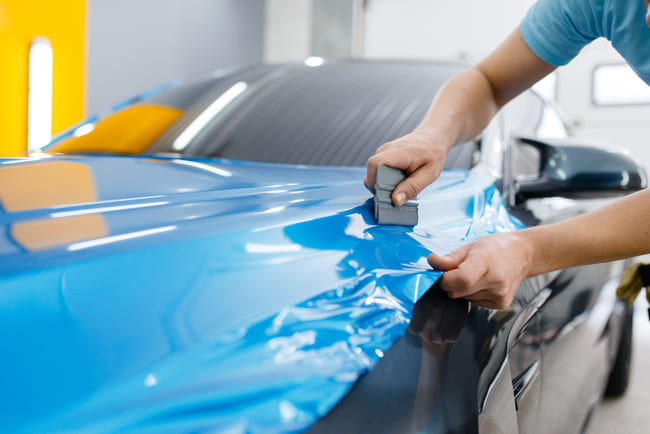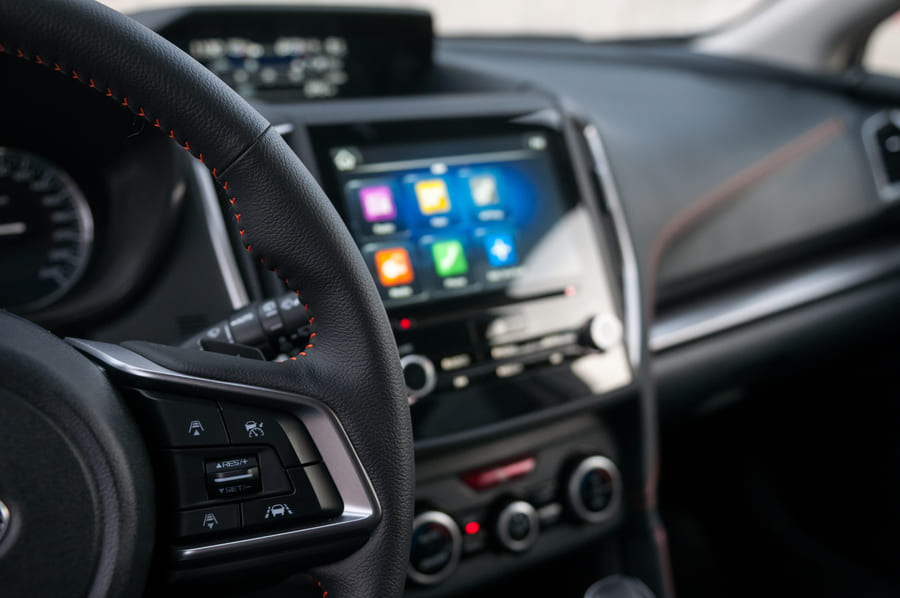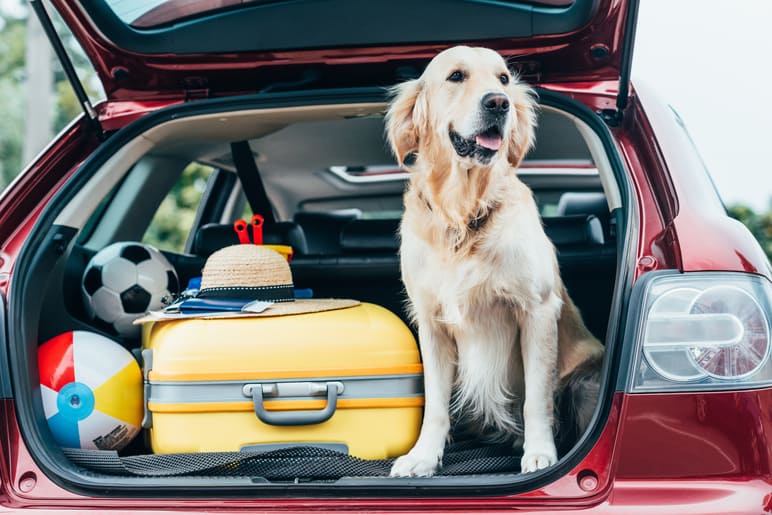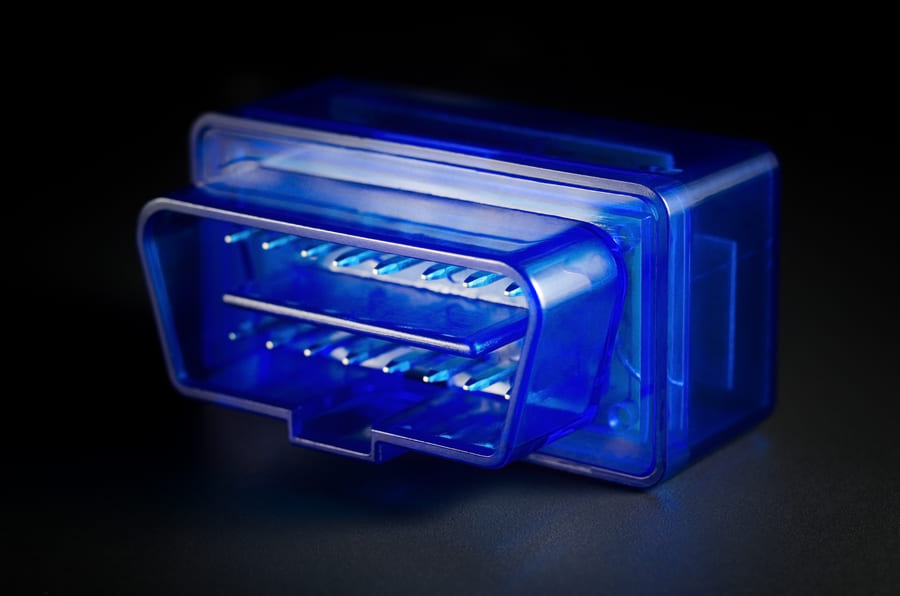
What is vehicle wrapping?
Are you looking to spice up the appearance of your car but aren’t prepared to splash out on a full respray? Car wrapping could be the right solution for you. It involves wrapping the whole or part of the vehicle body in a special vinyl wrap. It can be used to change the colour, design or finish of the car exterior and acts as a protective film.
Although vinyl chloride has been around since the 1920s, the practice of vehicle wrapping wasn’t popularised until the 1990s. Vinyl printing techniques and technology has advanced significantly since the last century, there’s a much wider product range, and the quality of the materials has been improved. Nowadays, cast vinyl is often used for wrapping as it can be easily moulded to fit the contours of the vehicle body and is highly durable.
How to wrap a car

In theory, most people have the skills for DIY vehicle wrapping as the techniques and tools are fairly straightforward. However, this is a very fiddly task which requires steady hands. It is often worth paying a professional to do it for you as a botched job will make your car look a lot worse. You can either get a full wrap which covers the entire car or a partial wrap which covers one or more panels.
If you do decide to wrap your car yourself, there are a few things to consider. First of all, you should make sure that the paintwork is in good condition and there are no scratches, chips or other similar defects. The vinyl film can often make these defects more obvious and also stop the wrap from sticking to the surfaces properly. It is better to apply the film indoors as it will be more difficult if you are in a windy or wet environment, for instance. It may also be a good idea to get an assistant to help you with the application.
The first step is to clean and degrease the body to remove any contaminants or grime that are clinging to the surface. Once it is clean and dry, a solvent is applied to the surface to prepare it for the wrap. The backing of the film on the adhesive side then has to be removed before a fluid is applied to the vinyl sheet. When applying it you have to press it down evenly and remove any bubbles. Some people like to use a squeegee to do this. After that, the excess material on the edges should be trimmed and the vinyl needs to be set by heating it up with an airgun.
Types of car wrapping
There are several types of car wrap available on the market to cater for all tastes.The benefits and disadvantages of wrapping
FAQs
⚠ Can you wash the vinyl wrap?
They can be washed by hand and sometimes using a pressure washer. There is a greater risk of peeling or other damage if you go to a drive-through car wash.
⚠ Can you wax or polish the wrap?
It doesn’t normally require wax as the material provides a similar finish and amount of protection. If you do decide to wax it, it is better to use a specialised product for vinyl covers or pure car wax.
⚠ How do you take it off?
It has to be removed using heat and should not be forced off. The safest way to take it off is to have it removed by a professional.










Comment